Milan: A Cultural and Architectural Journey through the City
Milan, the cosmopolitan heart of Lombardy, is a city where the past and the present meet in a uniquely elegant way. Every building, every piazza, every archway tells a story that reaches far into the past. I set out on a journey through the city’s most iconic places – and was rewarded with a walk through centuries of history, faith, and architectural excellence.
Duomo di Milano and Piazza del Duomo
My day began where all roads in Milan seem to lead: at the Duomo. With its intricate façade, 135 spires, and over 3,400

statues, this is one of the most stunning examples of Gothic architecture in the world. Construction began in 1386, and the building grew slowly under many master builders, including Simone da Orsenigo and later Giovanni Antonio Amadeo.
The facade, completed in the 19th century, is a masterpiece of marble lace decorated with 135 towers and over 3,400 statues.

Inside, 52 mighty columns divide the vast nave – a number corresponding to the weeks of the year – and stained glass windows from the 15th century cast colorful biblical scenes across the stone floor. At the high altar, a relic known as the “Holy Nail” is displayed once a year. Beneath the altar lies the crypt of Saint Charles Borromeo, one of Milan’s most revered religious figures.

The nave rises almost 45 meters high and gives the space an almost transcendent atmosphere. The high altar and the Holy Nail Relic – according to legend part of the cross of Christ – emphasize the religious significance. In the crypt is the grave of St. Charles Borromeo, one of the most important figures of the Counter-Reformation.
One of the highlights is the rooftop terrace, which visitors can access via stairs or an elevator. Up here, between marble pinnacles, flying buttresses, and grotesques, I had a sweeping view of the city – all the way to the Alps. Among the statues, one can find peculiar details: ropes, rackets, even the face of Dante Alighieri.

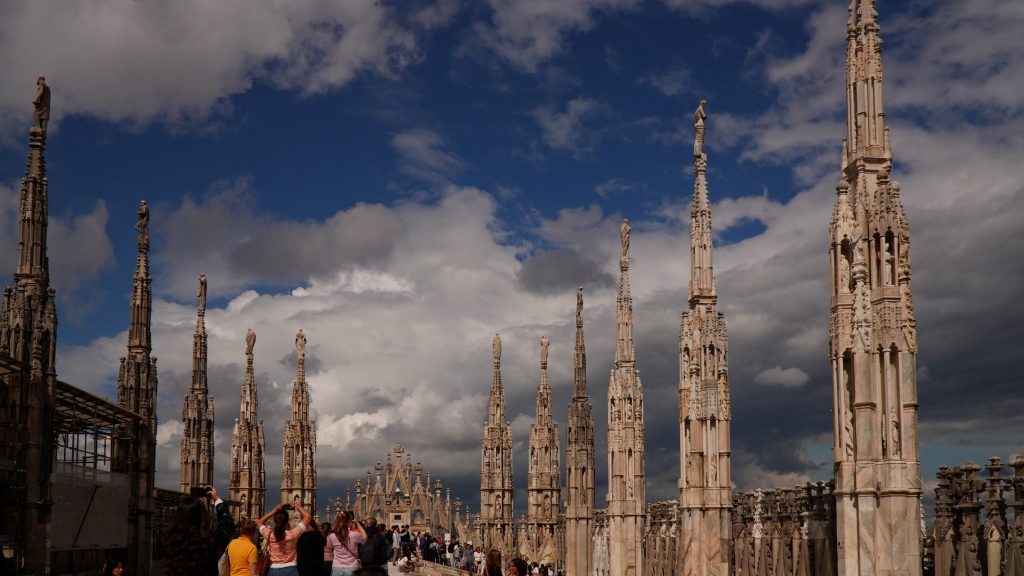
In front of the cathedral, Piazza del Duomo bustles with life. It has always been the city’s main square, where celebrations, protests, and spontaneous gatherings take place.
Palazzo Reale di Milano
Just south of the Duomo stands the Palazzo Reale. This building, dating back to the 12th century, was transformed into a
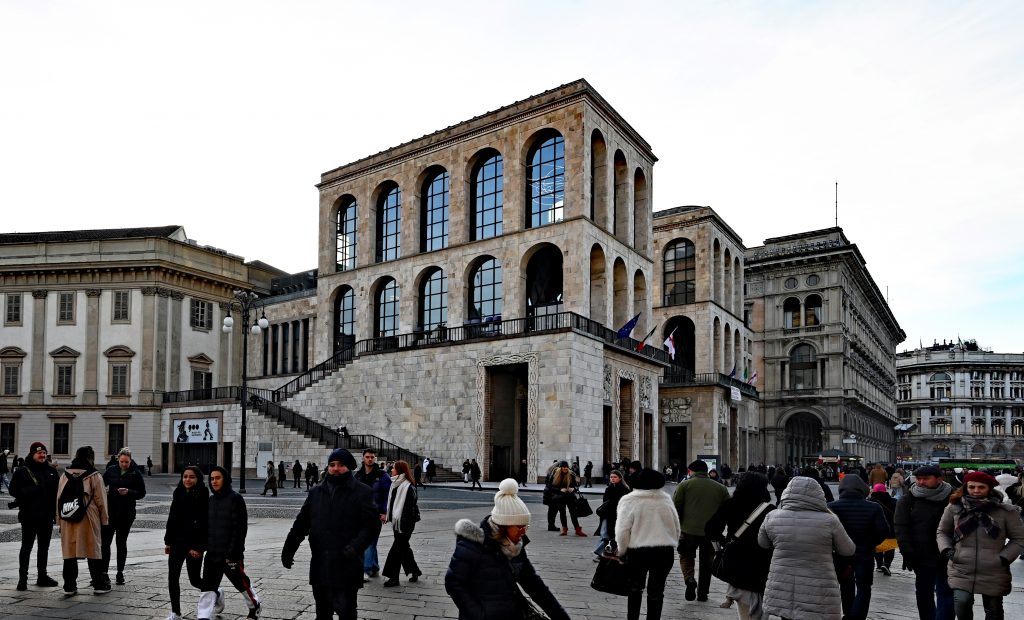
royal palace during Habsburg rule. In the 18th century, architect Giuseppe Piermarini gave it its neoclassical appearance. The elegant halls, mirrored salons, and stuccoed ceilings were once the setting of royal receptions. Today, the palace hosts temporary exhibitions of great artists like Caravaggio, Modigliani, and Picasso.
Galleria Vittorio Emanuele II
The majestic glass-roofed arcade next to the Duomo is the Galleria Vittorio Emanuele II, designed by Giuseppe Mengoni
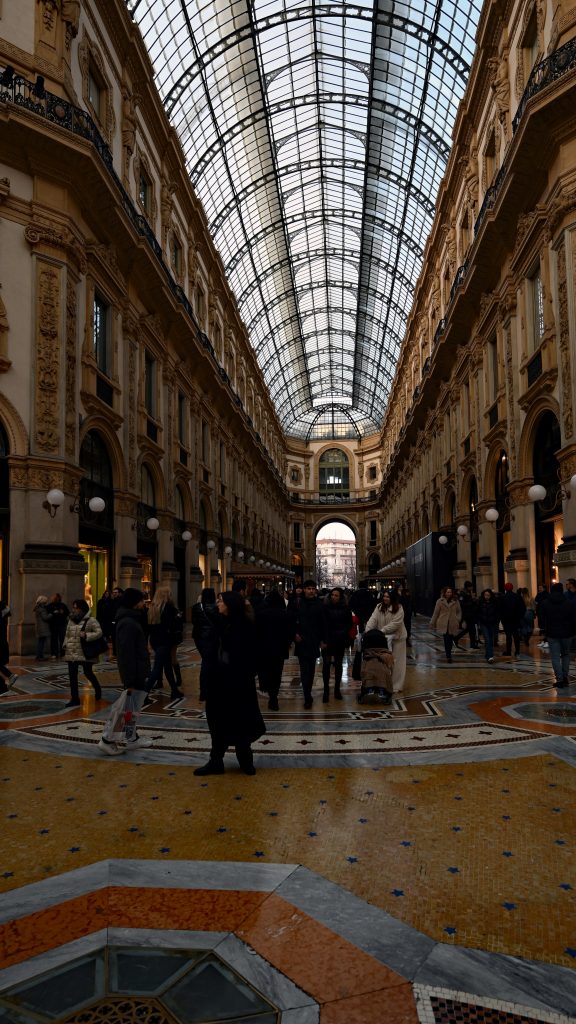
and opened in 1877. With its iron-and-glass dome and ornate mosaic floor, the Galleria was a marvel of engineering at the time. It quickly became the meeting place of Milanese society. Under the central dome, city coats of arms are inlaid in mosaic. According to tradition, spinning your heel on the bull of Turin brings good luck.
Teatro alla Scala
Through the Galleria, I reached Piazza della Scala and the legendary opera house: Teatro alla Scala. Commissioned by Empress Maria Theresa of Austria after the old opera house burned down, it opened in 1778. The façade is simple, but inside, velvet and gilded ornamentation combine with perfect acoustics. It has hosted the premieres of works by Verdi, Puccini, and Rossini, and performances by Maria Callas and Pavarotti. Piermarini’s design ensures a unique sound quality that remains unmatched.

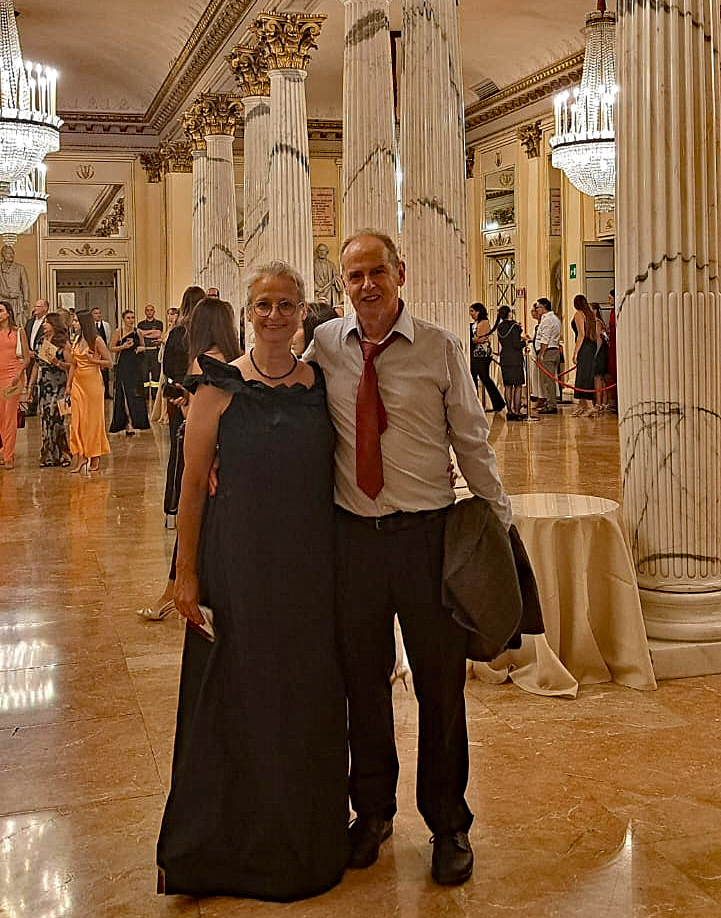
San Gottardo in Corte
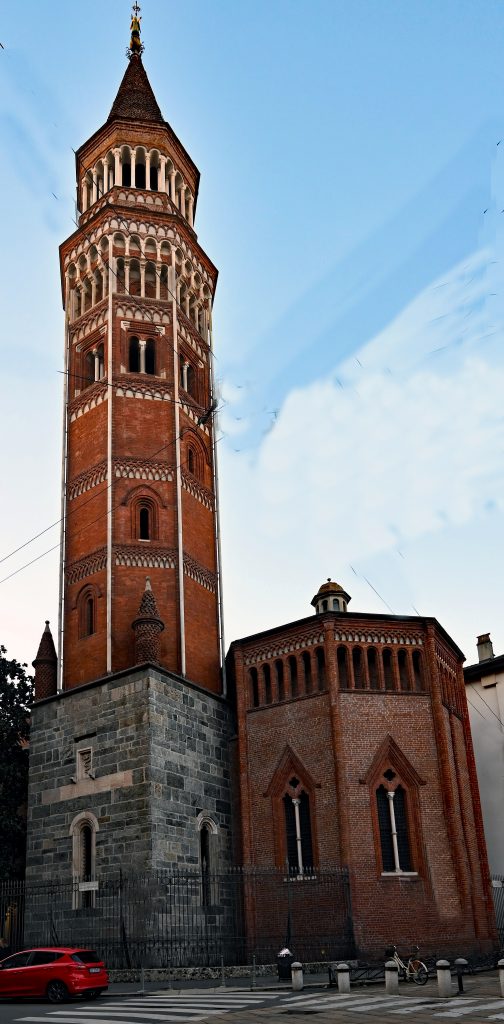
Hidden behind the Royal Palace is the Church of San Gottardo in Corte. Built in 1330 as a court chapel for the Visconti family, it combines Romanesque and Gothic elements. It is also notable for its early clock tower. Inside are medieval frescoes and the colorful tomb of Azzone Visconti.
Pecorari combined Gothic and Romanesque elements. The church was one of the first in Milan to have a clock tower – a symbol of the new era. Inside: delicate frescoes and the polychrome tomb of Azzone Visconti, which reflects the splendor of court life.
Santa Maria presso San Satiro
A short walk from the Duomo brought me to Santa Maria presso San Satiro. This small Renaissance church holds a big
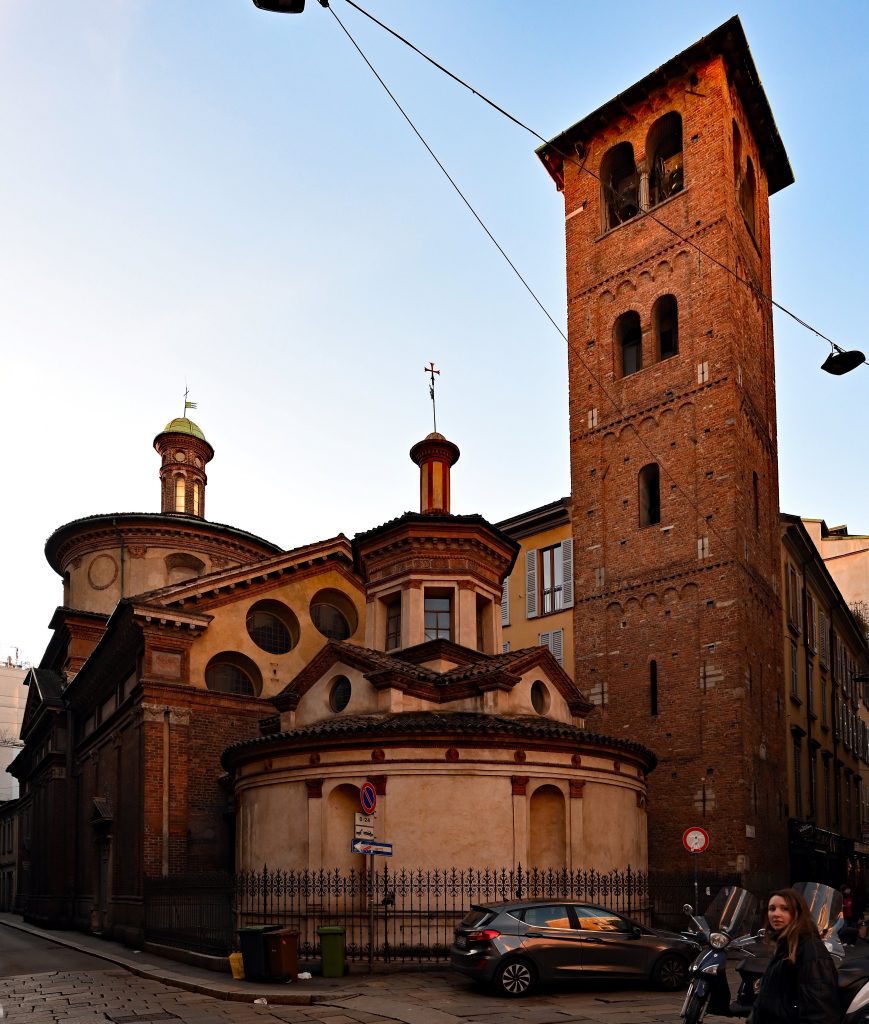
surprise: Bramante’s famous trompe-l’œil apse. Due to spatial limitations, the apse had to be faked – and Bramante’s illusion of a deep choir is almost perfect. The stucco ceiling and proportioned nave make this church a small masterpiece of perspective and spatial trickery.
Bramante’s famous trompe-l’œil apse. Due to spatial limitations, the apse had to be faked – and Bramante’s illusion of a deep choir is almost perfect. The stucco ceiling and proportioned nave make this church a small masterpiece of perspective and spatial trickery.
Basilica di Sant’Ambrogio
Far older is the Basilica di Sant’Ambrogio, founded in 379 AD by Milan’s patron saint. The current Romanesque structure, with mismatched towers

with mismatched towers and a wide brick façade, dates from the 11th century. Inside, the golden altar by Volvinius and the ancient pulpit reflect Milan’s early Christian roots. The crypt holds the remains of Saint Ambrose, alongside two early martyrs: Gervasius and Protasius.
Piazza dei Mercanti
In Piazza dei Mercanti, Milan’s medieval spirit is still alive. This square was once the center of civic life. The Broletto Nuovo,
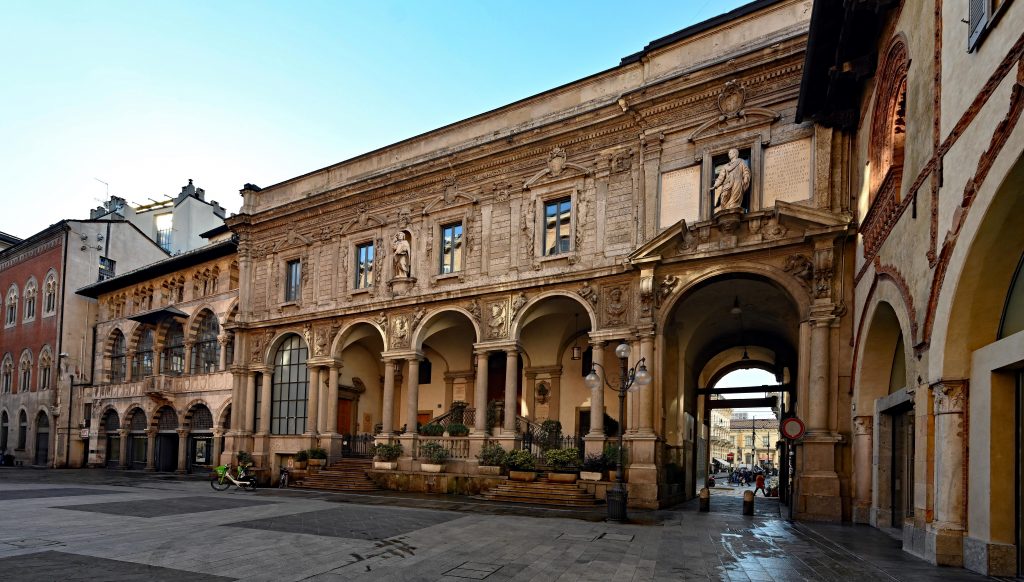
built in 1233, served as the city hall. Its open loggia and arched architecture give it a timeless beauty. In the quiet of the square, one can still imagine the voices of merchants and magistrates echoing across the stones.
Castello Sforzesco
I continued to the red-brick fortress of the Castello Sforzesco. Originally built in the 14th century by the Visconti, it was later expanded by Francesco Sforza. Filarete designed the central tower, and Leonardo da Vinci contributed frescoes in the interior. The castle is vast, with large courtyards and several museums inside. The Rondanini Pietà, Michelangelo’s final sculpture, stands in a quiet hall – unfinished, haunting, and deeply moving. In the Sala delle Asse, Leonardo’s plant-themed murals evoke the depth of his genius.

Parco Sempione and Arco della Pace
Behind the castle stretches Parco Sempione, a green refuge in the heart of the city. Created in the 19th century in the style of English gardens, it
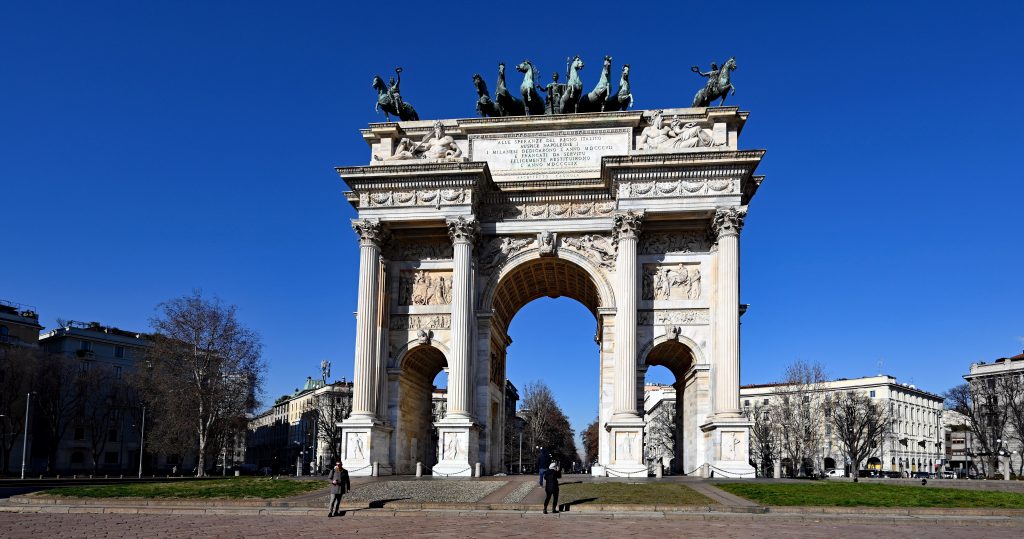
of English gardens, it offers paths, sculptures, and views of the city skyline. At its far end stands the Arco della Pace, a neoclassical triumphal arch begun under Napoleon and finished under Austrian rule. Corinthian columns and mythological statues mark the triumph of peace after the Congress of Vienna.
Cimitero Monumentale
The Cimitero Monumentale is not just a cemetery – it is a museum of funerary art. Opened in 1866 and designed by Carlo Maciachini, it features elaborate tombs, sculptures, and chapels in every imaginable style: Neo-Gothic, Art Nouveau, Rationalism. Many famous Milanese rest here, including the writer Alessandro Manzoni. The Famedio – a temple-like structure near the entrance – honors the city’s great sons and daughters.
Colonne di San Lorenzo
Finally, I reached the Colonne di San Lorenzo. These 16 Corinthian columns from Roman times stand in front of the Basilica di San Lorenzo Maggiore. They are reminders of Roman Milan and have witnessed centuries of change. The church behind them, originally built in the 4th century and later rebuilt, contains ancient mosaics and chapels.
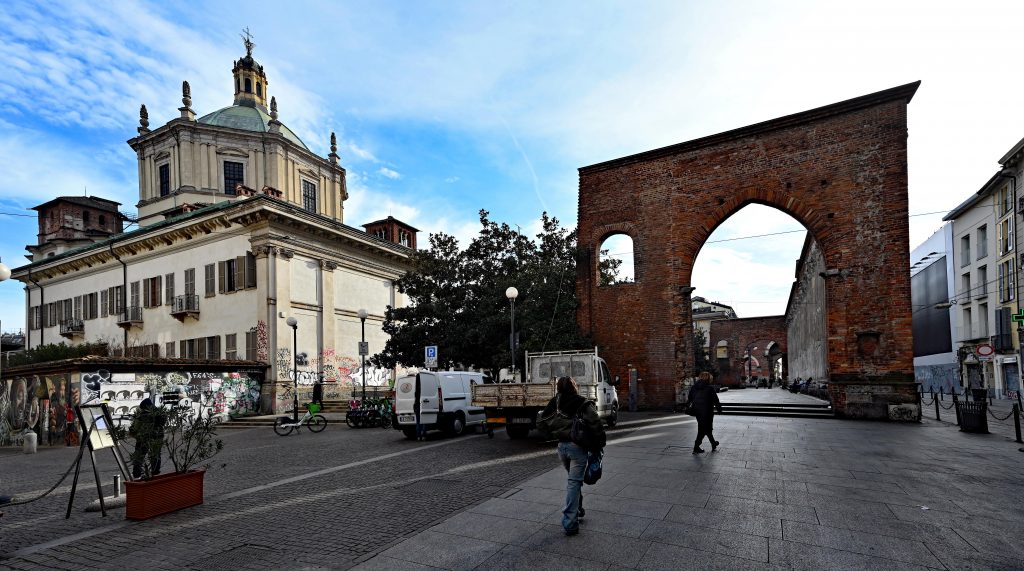
The basilica was built between the late fourth and early fifth centuries. The exact date is uncertain, as are the name of who commissioned it and the circumstances of its foundation. According to some scholars, but unconfirmed by the archaeology or inscriptions, San Lorenzo was erected to coincide with the “Basilica Portiana”, which was built by the “Augustus of the West” (Valentinian I or Valentinian II) to please the Arian Bishop of Milan Auxentius (355–372). If true, San Lorenzo predates the foundation of the four Ambrosian basilicas. Contemporary sources recall that the so-called Basilica Portiana resisted the efforts of St Ambrose to wrest it from the Arians.
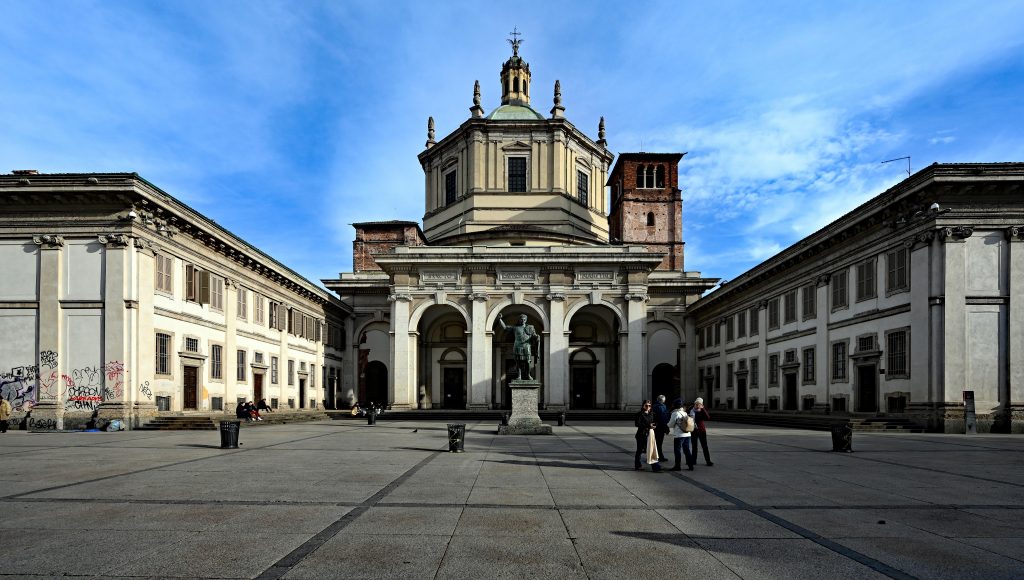
Conclusion
Milan is a city of layers – ancient and modern, sacred and secular. From Gothic spires to Renaissance illusions, from imperial halls to humble chapels, every stop along the way reveals a piece of Italy’s cultural heart. A visit to Milan is not just sightseeing. It is an encounter with the soul of Europe – through stone, glass, and music.